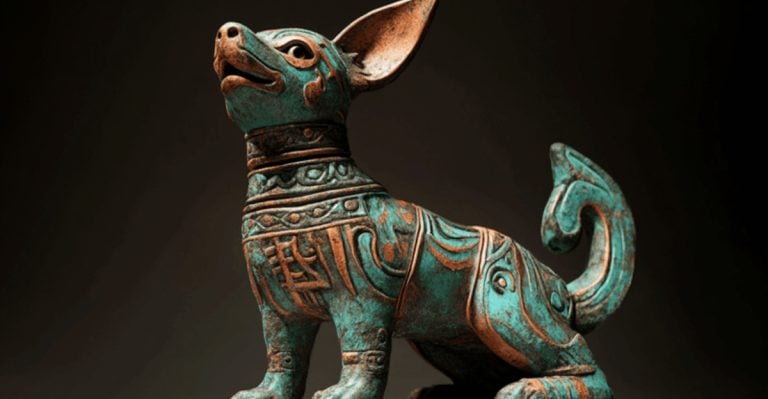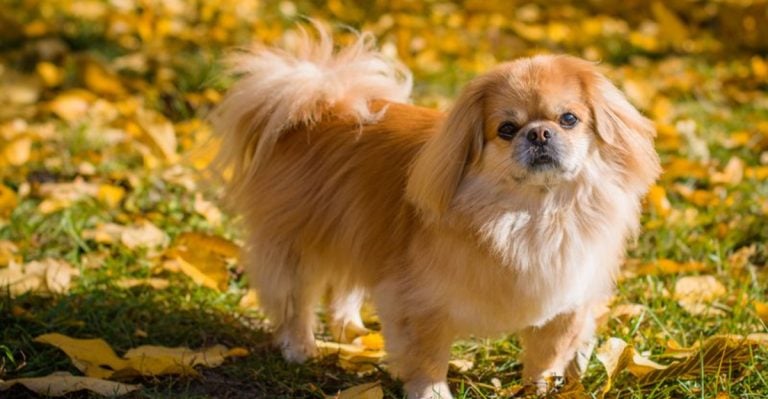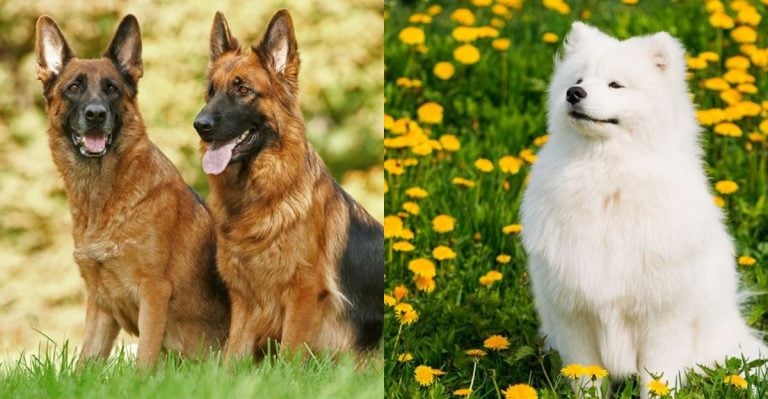15 Fascinating Reasons This Wolf-Like Dog Breed Is Unlike Anything You’ve Seen
At first glance, the Native American Indian Dog might make you do a double take. With their striking resemblance to wolves—piercing eyes, powerful stance, and dense, shimmering coats—they carry an ancient, almost mythical presence. But behind that wild exterior lies one of the most loyal, intuitive, and misunderstood dog breeds in existence.
Believed to descend from the original dogs that lived alongside Native American tribes, this rare breed isn’t just a relic of history—it’s a living connection to a way of life built on harmony with nature. Native American Indian Dogs (often called NAIDs) were bred with purpose: to reflect both the appearance and spirit of their ancestral canines, prized for their strength, intelligence, and deep bond with their human companions.
What makes this breed so fascinating isn’t just its heritage—it’s the incredible blend of traits that set it apart from every other dog. NAIDs are known for their emotional sensitivity, ability to adapt to a wide range of environments, and a protective instinct that never tips into aggression. They’re also remarkably versatile, excelling in everything from therapy work to agility, and they possess an endurance that once made them ideal for long days of work alongside early American settlers.
Despite their remarkable qualities, Native American Indian Dogs remain under the radar—partly because they’re not recognized by major kennel clubs, and partly because they require thoughtful, committed ownership. These aren’t dogs for casual pet parents; they thrive on trust, structure, and connection. Whether you’re drawn to their wild beauty or curious about their rich backstory, one thing is clear: this breed is unlike anything else out there. Here are 15 fascinating reasons why the Native American Indian Dog will completely change how you see man’s best friend.
1. Walking Relics of Ancient America
These magnificent canines carry living history in their DNA. Unlike most modern dog breeds developed in Europe, these wolf-like dogs trace their ancestry directly to North America’s indigenous canine populations.
Archaeological evidence suggests their ancestors walked alongside Native American tribes for thousands of years, forming partnerships that predated European contact. Their distinctive traits have remained remarkably unchanged through centuries.
When you welcome one into your home, you’re connecting with a lineage that witnessed the rise and fall of ancient American civilizations—a true living connection to our continent’s wild past.
2. Striking Resemblance to Wolves
From a distance, you might mistake them for actual wolves prowling through your neighborhood. Their erect ears stand perpetually alert, while almond-shaped eyes watch the world with ancient wisdom. The resemblance isn’t superficial—it extends to their movement and posture.
Unlike the exaggerated features of many modern breeds, their proportions remain balanced and functional. Their thick double coat creates a distinctive silhouette against the horizon.
Even experts occasionally do double-takes when spotting these dogs in natural settings. This uncanny similarity reflects their closer genetic relationship to wild canids than many other domestic breeds.
3. Protective Instincts for Their Pack
Fierce loyalty runs through their veins without the aggression problems found in some guardian breeds. They don’t need special training to protect—it’s hardwired into their nature to watch over their family members with vigilant attention.
Strangers might receive a cool assessment rather than an enthusiastic greeting. Their protection style relies on presence and deterrence rather than confrontation. They position themselves strategically between potential threats and their loved ones.
Many owners report feeling an extraordinary sense of security with these companions nearby. Their protective instinct extends to children and other pets they consider part of their pack.
4. Slightly Hypoallergenic Traits
Surprisingly gentle on sensitive sinuses, these canines produce less dander than you might expect from their plush coats. The unique composition of their fur traps allergens rather than releasing them into your home environment.
Many families who couldn’t previously consider dog ownership have found these breeds tolerable. Their self-cleaning tendencies mean less bathing and fewer allergen-releasing products needed for maintenance.
While no dog is completely allergen-free, allergy sufferers often report significantly reduced reactions to these wolf-like companions. This unexpected quality opens doors for families who thought pet ownership was forever out of reach.
5. Versatility in Skills and Roles
Few canines can match their impressive resume of abilities. Throughout history, these adaptable dogs have seamlessly transitioned between hunting partners, vigilant guardians, skilled herders, and devoted family companions.
Their versatility stems from exceptional problem-solving abilities rather than specialized breeding. They assess situations independently and adjust their approach accordingly—whether tracking game or gently herding children away from danger.
Modern owners marvel at how these dogs intuitively understand what’s needed in different scenarios. One moment they’re playfully entertaining children, the next they’re alerting you to an unexpected visitor with composed dignity.
6. Thrives in Social Environments
Despite their independent streak, these dogs flourish in connected households. Their ancient pack instincts translate beautifully to human family dynamics, creating deep bonds that transcend typical pet relationships.
Isolation is particularly challenging for these social creatures. They become visibly happier and more balanced when included in daily activities and family gatherings. Their contentment shows in subtle ways—relaxed posture, soft expressions, and gentle vocalizations.
Many owners describe them as “velcro dogs” who follow from room to room, not out of anxiety but from genuine desire for companionship. This social nature makes them exceptional therapy and emotional support animals when properly trained.
7. Intelligence That Demands Respect
Conventional obedience training methods often fall flat with these brilliant canines. Their cognitive abilities more closely resemble working with a clever, independent-minded partner than training a subordinate pet.
They assess commands for logic and purpose before deciding to comply. This isn’t stubbornness—it’s discernment. Owners who approach training as collaborative problem-solving report remarkable results.
Their memory for places, people, and experiences borders on photographic. They’ll remember a visitor from years ago or navigate back to a location visited just once. This intelligence requires mental stimulation beyond simple games—puzzle toys, scent work, and strategic challenges keep their minds engaged.
8. Extended Lifespan for a Large Breed
Genetics have blessed these magnificent animals with remarkable longevity. While most large dog breeds typically live 8-12 years, these wolf-like companions routinely reach their mid-teens and beyond, giving families extra precious years together.
Their robust health stems from minimal genetic manipulation throughout their development. Free from many breed-specific health concerns that plague highly specialized dogs, they maintain vitality well into their senior years.
Owners often report that their 12-year-old companions still exhibit playful energy and alertness that belie their age. This extended time together allows for deeper bonds and more shared adventures than possible with many other large breed options.
9. Seasonal Shedding Keeps Coats Healthy
The spectacular “blowing coat” phenomenon might initially alarm new owners, but this natural process serves an important purpose. Twice yearly, these dogs release their undercoat in an impressive display that resembles a canine snowstorm.
Between these shedding events, they require surprisingly minimal grooming compared to many long-haired breeds. Their fur contains natural oils that repel dirt and prevent matting. Regular brushing during shedding seasons prevents the fur from spreading throughout your home.
This efficient system evolved to maintain optimal insulation regardless of season. The result is a coat that remains lustrous and functional year-round with less maintenance than many shorter-haired breeds require.
10. Unique Voices That Speak Volumes
Forget standard barks—these expressive canines possess a vocal range that astounds first-time owners. Their communication arsenal includes melodic howls, conversational “woo-woos,” excited yips, and even content purring sounds rarely heard in domestic dogs.
Each vocalization carries specific meaning, from greeting family members to expressing opinions about neighborhood activities. Long-time owners develop an understanding of this complex language, often describing full “conversations” with their vocal companions.
Most fascinating is their selective use of these sounds—they remain surprisingly quiet when appropriate. This vocal intelligence reflects their nuanced understanding of social communication and timing.
11. Exceptional Endurance and Stamina
Marathon runners of the canine world, these dogs can maintain steady activity for hours without flagging. Their efficient gait and remarkable oxygen utilization evolved for covering vast territories in search of food and resources.
Modern owners are often unprepared for their seemingly boundless energy. A casual 30-minute walk barely scratches their exercise needs. When properly conditioned, they make exceptional partners for hiking, running, and outdoor adventures.
Most impressive is their ability to modulate energy—they can transition from high-intensity activity to calm household companion when their exercise needs are met. This adaptability makes them suitable for active families who can provide adequate outlets for their natural stamina.
12. Deep Emotional Sensitivity
Few creatures possess such remarkable empathy for human emotional states. These perceptive companions can detect subtle shifts in your mood long before you’ve expressed them outwardly. Their response is equally nuanced—offering quiet presence during sadness or playful distraction during stress.
This sensitivity extends beyond their immediate family. They often identify individuals needing emotional support in any gathering. Stories abound of these dogs gravitating toward grieving or anxious visitors without prompting.
Their emotional intelligence makes them exceptional therapy dogs for conditions ranging from PTSD to anxiety disorders. This profound connection creates a unique bond that owners describe as unlike any other pet relationship they’ve experienced.
13. Low Prey Drive
Contrary to expectations based on their wild appearance, many of these wolf-like dogs show remarkably restrained prey drive. Small animals that would trigger intense chase responses in similar-looking breeds often receive curious inspection instead of pursuit.
This unexpected characteristic stems from their historical role as all-purpose companions rather than specialized hunters. Many families successfully integrate these dogs with cats, rabbits, and even birds after proper introductions.
Their discernment between threats and non-threats extends to wildlife encounters. Rather than mindlessly chasing every squirrel or rabbit, they often observe with intelligent interest. This balanced temperament makes them suitable for multi-pet households where other predatory breeds might struggle.
14. Adaptability to Various Climates
Engineering marvels of natural insulation, their remarkable coats function like sophisticated climate control systems. The dense undercoat traps warm air in winter while the guard hairs reflect summer heat and protect against UV radiation.
Northern owners report these dogs happily playing in deep snow and sub-zero temperatures. Meanwhile, those in warmer regions observe how their companions naturally adjust activity levels and seek appropriate cooling spots during heat.
This adaptability stems from their ancestors’ need to thrive across diverse North American landscapes. Proper care during extreme conditions remains important, but their natural resilience exceeds many specialized breeds. This versatility makes them suitable companions across various geographic regions.
15. Strong Pack Mentality
Family isn’t just important to these dogs—it’s fundamental to their existence. Their pack orientation creates household dynamics unlike those seen with more independent breeds. They naturally establish and respect family hierarchies while forming distinct relationships with each member.
Mealtime, walks, and even sleeping arrangements become communal activities they actively orchestrate. They’ll often herd family members together for activities, visibly distressed when the “pack” is separated.
Most charming is their tendency to create and enforce family routines. They might gather everyone for evening relaxation or morning activities with gentle persistence. This deep social programming creates households where everyone feels included in a connected social system.





















